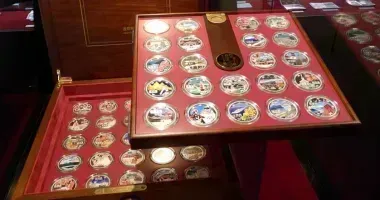Aoba Castle (Sendai Castle): A historical landmark with panoramic views of Sendai
- Published on : 11/06/2024
- by : Japan Experience
- Youtube
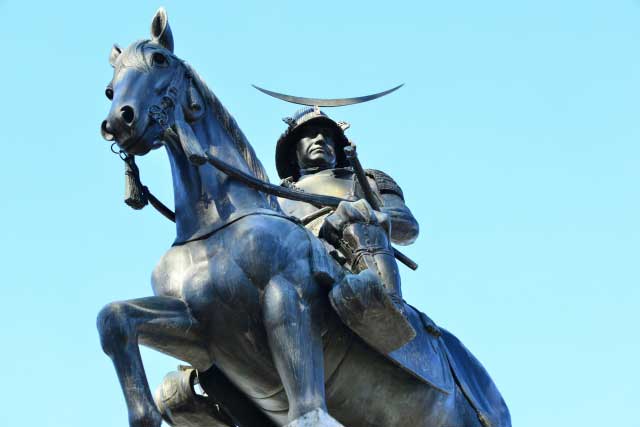
Statue of Masamune Date at Aoba Castle
Perched atop Mount Aoba, overlooking the city of Sendai, stands the remnants of Aoba Castle, also known as Sendai Castle. This historic site, commissioned by the legendary Date Masamune in 1600, offers visitors a glimpse into Japan's feudal past and breathtaking views of the modern cityscape. Though much of the original structure has been lost to time, what remains continues to captivate visitors with its rich history and cultural significance. As you explore the castle grounds, you'll discover the legacy of the Date clan, admire the strategic design of the fortress, and experience the enduring influence of this iconic landmark on Sendai's identity. Whether you're a history enthusiast, a culture seeker, or simply looking for panoramic views, Aoba Castle promises a memorable journey through time.
The history and significance of Aoba Castle
Aoba Castle, originally known as Sendai Castle, was built by Date Masamune, the powerful daimyo of the Sendai Domain, in 1600. The castle served as the seat of power for the Date clan throughout the Edo Period. Date Masamune, often referred to as the "One-Eyed Dragon," was a formidable warrior and shrewd politician who played a significant role in shaping the region's history.
The castle's construction marked the beginning of Sendai as a major city. Masamune chose the site atop Mount Aoba for its strategic advantages, offering natural defenses and a commanding view of the surrounding area. Over the years, the castle underwent several renovations and expansions, reflecting the changing needs and fortunes of the Date clan.
Unfortunately, much of the original castle was lost to fires, earthquakes, and the anti-feudal sentiment of the Meiji Restoration. The final blow came during World War II when American bombing raids destroyed what remained of the structure. Today, visitors can see the impressive stone walls, a reconstructed guard tower, and a museum that houses artifacts from the castle's heyday.
Design and layout of the castle complex
Aoba Castle was designed as a hilltop-style Japanese castle, making full use of the natural terrain for defense. The castle complex was divided into several distinct areas:
- Honmaru (Inner Bailey): This was the heart of the castle, situated at the highest point. It contained the main keep (tenshu), though only the foundation was ever completed.
- Ni-no-maru (Second Bailey): Located north of the Honmaru, this area served both administrative functions and housed the main residence of the daimyo.
- San-no-maru (Third Bailey): This outer area contained residences for high-ranking samurai.
- Higashi-no-maru (East Bailey): Connected to the main castle by a bridge across the Hirose River, this area housed the main gate (Ōte-mon).
The castle was protected by impressive stone walls, some reaching heights of 15 meters. Instead of a central keep, the Honmaru was guarded by four three-story yagura (watchtowers). This unique design feature was likely a calculated move by Date Masamune to avoid provoking suspicion from the Tokugawa shogunate.
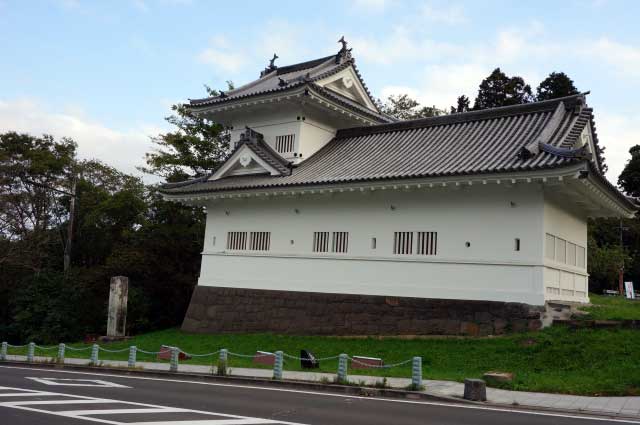
Aoba Castle, Sendai, Japan
Key attractions at the castle site
While much of the original castle is gone, several key attractions draw visitors to Aoba Castle today:
- Statue of Date Masamune: An iconic equestrian statue of the castle's founder overlooks the city, offering a powerful visual representation of his enduring legacy.
- Gokoku Shrine: Established in 1902, this Shinto shrine honors Japan's war dead and is associated with Yasukuni Shrine in Tokyo.
- Aoba Castle Museum: This museum showcases the castle's history through artifacts, models, and interactive displays. Visitors can experience a virtual reality tour of the castle as it appeared in its prime.
- Reconstructed Wakiyagura: This guard tower gives visitors an idea of what the original castle structures might have looked like.
- Stone walls: The impressive remaining stone walls demonstrate the castle's former grandeur and the skill of medieval Japanese stonemasons.
- Panoramic views: The castle's hilltop location offers stunning views of Sendai city and, on clear days, even glimpses of the Pacific Ocean.
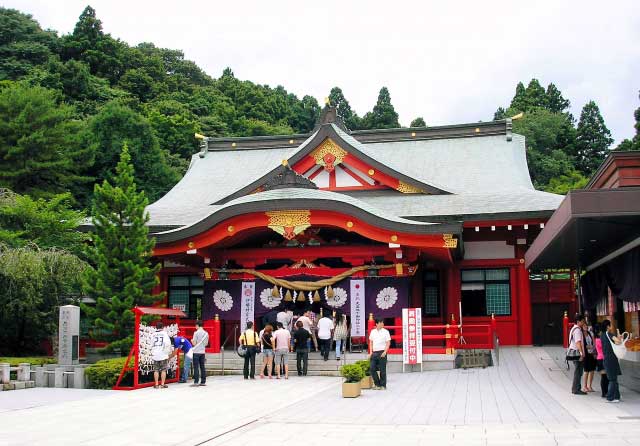
Gokoku Shrine in the grounds of Aoba Castle, Sendai
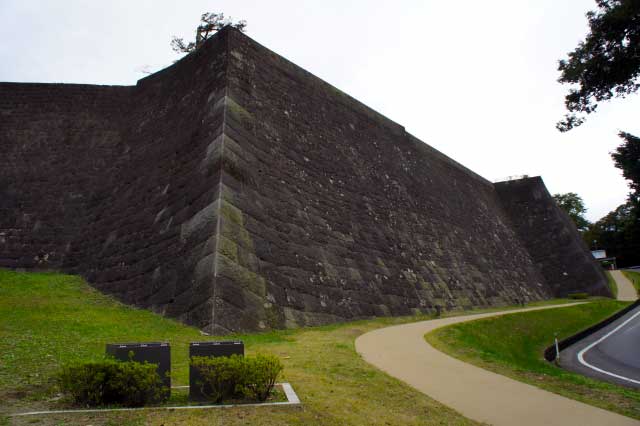
Stone walls, Aoba Castle, Sendai, Japan
The legacy of Date Masamune and the Date clan
Date Masamune's influence extends far beyond the walls of Aoba Castle. As the founder of Sendai and one of the most powerful daimyo of his time, his legacy is deeply intertwined with the city's identity. The Date clan ruled the Sendai Domain for over 260 years, shaping the region's political, economic, and cultural landscape.
Masamune was known for his military prowess, political acumen, and cultural sophistication. He was a patron of the arts and had a keen interest in Western culture and technology. This openness to foreign influences is reflected in some of Sendai's historical sites, such as the Zuihōden Mausoleum, where Masamune is entombed.
The Date clan's impact on Sendai is evident in various aspects of the city's culture, from traditional crafts to local festivals. The Sendai Tanabata Festival, one of Japan's most famous summer events, has its roots in a tradition started by Date Masamune.
Today, Date Masamune remains a source of pride for Sendai residents, with his image frequently used in local branding and tourism promotions. The enduring fascination with the "One-Eyed Dragon" ensures that the legacy of the Date clan continues to shape Sendai's cultural identity.
Visiting Aoba Castle: practical information and tips
For those planning a visit to Aoba Castle, here are some practical tips to enhance your experience:
- Access: The castle site is easily reached using the Loople Sendai sightseeing bus. Get off at stop #6 for the castle grounds, or stop #5 for the nearby Sendai City Museum.
- Opening hours: The castle grounds are open 24/7, but the museum operates from 9:00 AM to 4:45 PM, closed on Mondays.
- Admission: Entry to the castle grounds is free, but there's a fee for the museum and VR experience.
- Best time to visit: Early morning or late afternoon for the best lighting and fewer crowds. Spring and autumn offer particularly beautiful scenery.
- Guided tours: Consider joining a guided tour to gain deeper insights into the castle's history and significance.
- Combine with other attractions: Visit the nearby Sendai City Museum to learn more about the city's history and see artifacts from the Date clan.
- Photography: Don't miss the opportunity to capture stunning views of Sendai from various vantage points on the castle grounds.
Remember to wear comfortable shoes as there's quite a bit of walking involved, and consider bringing water, especially during summer months.

Aoba Castle, Sendai, Japan
Nearby attractions and things to do in Sendai
Aoba Castle is just one of many attractions Sendai has to offer. Here are some other nearby sites and activities to consider:
- Zuihōden Mausoleum: The ornate final resting place of Date Masamune and his family members, showcasing beautiful Momoyama-style architecture.
- Osaki Hachimangu Shrine: A stunning example of Date clan architecture, this National Treasure was built in 1607 by Date Masamune.
- Rinnoji Temple: The family temple of the Date clan, featuring a beautiful traditional garden.
- Sendai City Museum: Located at the foot of Mount Aoba, this museum houses an extensive collection of Date clan artifacts and local history exhibits.
- Jozenji-dori Avenue: A beautiful tree-lined street perfect for a leisurely stroll, shopping, or enjoying local cafes.
- Sendai Mediatheque: A modern cultural complex designed by renowned architect Toyo Ito, offering libraries, galleries, and event spaces.
- Gyutan (beef tongue) tasting: Try Sendai's famous local delicacy at one of the many specialized restaurants in the city.
For those with more time, consider a day trip to the nearby Matsushima Bay, one of Japan's Three Great Views, or visit the impressive Yamadera temple complex in neighboring Yamagata Prefecture.
Aoba Castle's role in modern-day Sendai
Though Aoba Castle no longer stands in its full glory, its presence continues to play a significant role in modern-day Sendai. The castle site serves as a vital link between the city's past and present, offering both residents and visitors a tangible connection to Sendai's rich history.
Today, the castle grounds function as a public park and popular tourist destination, providing a green oasis in the heart of the city. It's a favored spot for locals to relax, exercise, or enjoy seasonal events. The site hosts various cultural activities throughout the year, including historical reenactments and traditional performances, helping to keep the spirit of the Date clan alive.
Educationally, Aoba Castle plays a crucial role in teaching younger generations about Sendai's history. School trips to the site are common, and the museum's interactive exhibits engage visitors of all ages in learning about the castle's past.
The castle's iconic status also makes it a symbol of Sendai's identity and pride. Its image is often used in city promotions and souvenirs, serving as a reminder of Sendai's historical significance and cultural heritage.
As Sendai continues to evolve as a modern city, Aoba Castle stands as a testament to its enduring connection with history. It serves not only as a tourist attraction but as a living monument to the city's rich past and a source of inspiration for its future. Will you explore this fascinating blend of history and modernity on your next visit to Sendai?



